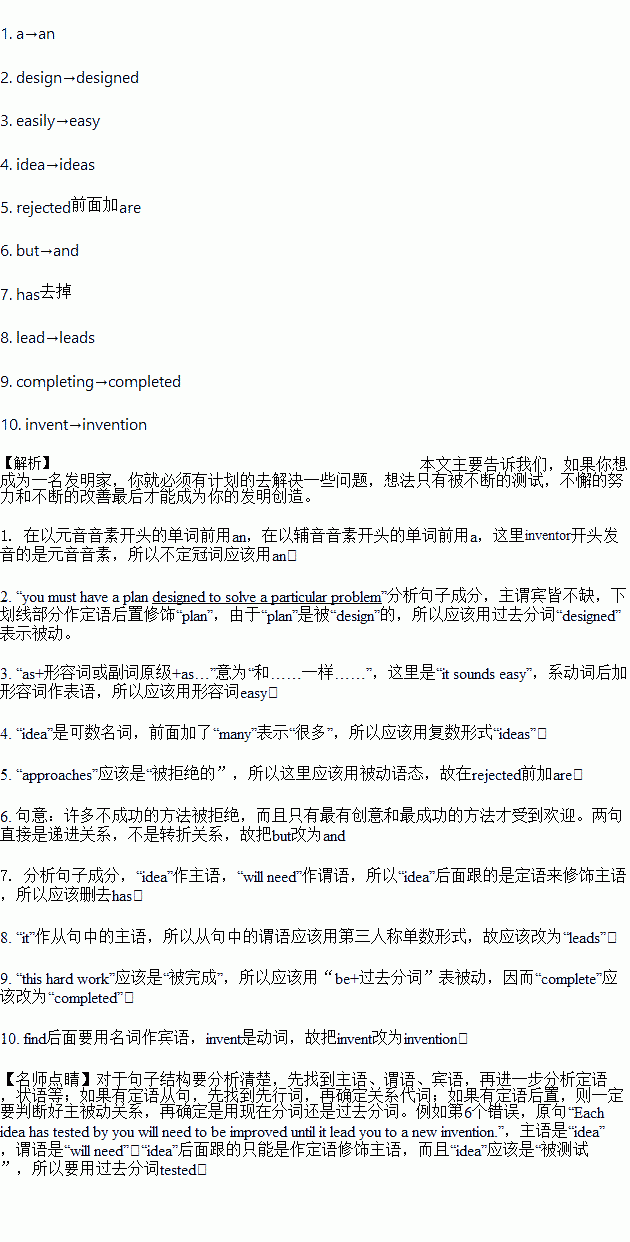题目内容
假定英语课上老师要求同桌之间交换修改作文,请你修改你同桌写的以下作文。文中共有10处语言错误,每句中最多有两处。错误仅涉及一个单词的增加、删除或修改。
增加:在缺词处加一个漏字符号(∧),并在其下面写出该加的词。
删除:把多余的词用斜线(\)划掉。
修改:在错的词下画一横线,并在该词下面写出修改后的词。
注意:1.每处错误及其修改均仅限一词。
2.只允许修改10处,多者(从第11处起)不计分。
If you want to be a inventor, you must have a plan design to solve a particular problem. This is not as easily as it sounds. Many idea, developed after weeks of research, may not prove successful. Many unsuccessful approaches rejected, but only the most creative and successful ones are welcomed. Each idea has tested by you will need to be improved until it lead you to a new invention. Once this hard work has been completing and the patent committee has approved your design, you will find your invent adopted on all sides.
练习册系列答案
 黄冈360度定制密卷系列答案
黄冈360度定制密卷系列答案 阳光考场单元测试卷系列答案
阳光考场单元测试卷系列答案 名校联盟冲刺卷系列答案
名校联盟冲刺卷系列答案 名校提分一卷通系列答案
名校提分一卷通系列答案
相关题目

